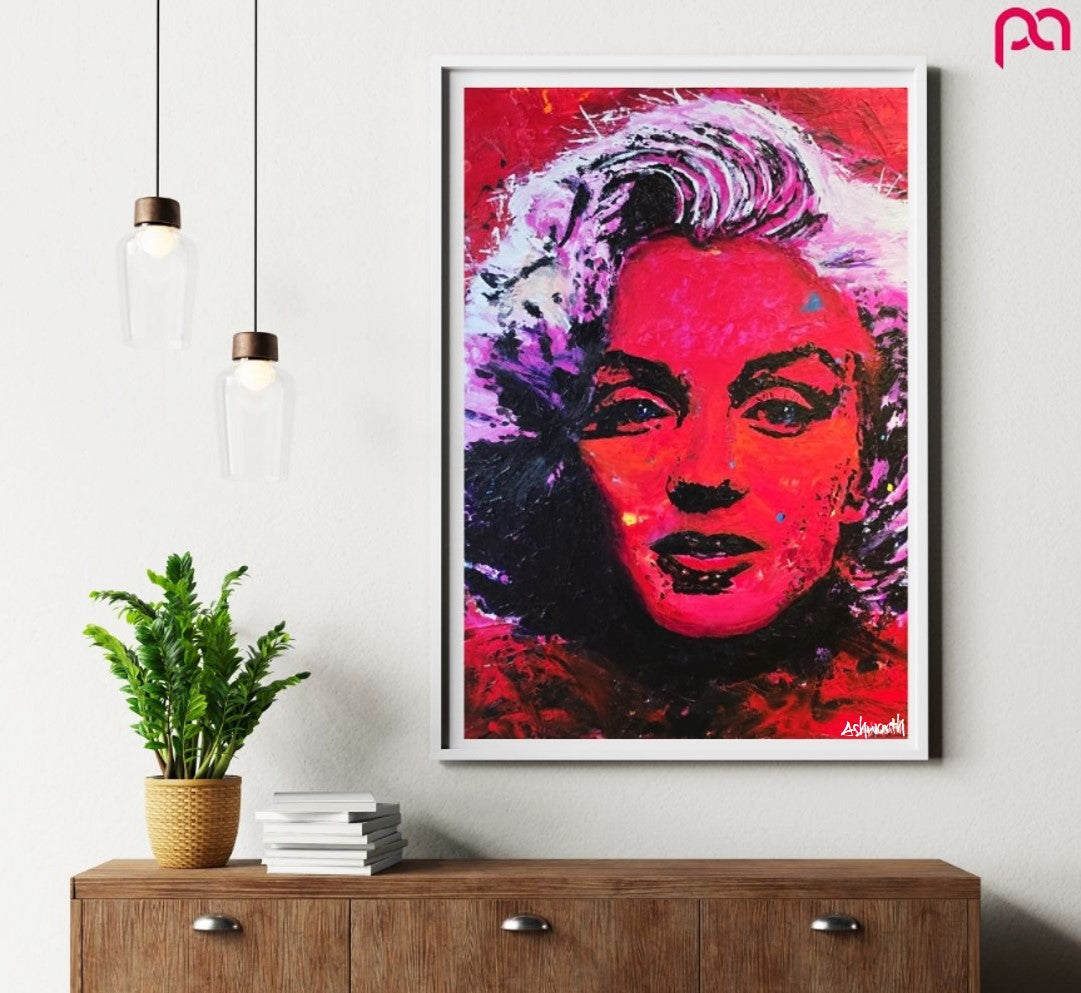
How to Understand What “Good” Art Is

Art has been a subject of fascination, debate, and interpretation for centuries. From the Renaissance masterpieces of Leonardo da Vinci to the abstract brilliance of Jackson Pollock, the question remains: what makes art “good”? While the answer may not fit into a tidy box, exploring this question leads us into a deeper understanding of art's purpose, impact, and value.
In this article, we’ll explore how to recognize, appreciate, and understand what “good” art is by examining its elements, cultural and personal significance, emotional resonance, and the craftsmanship involved.
- The Subjectivity and Personal Preferences of Art
One of the most profound truths about art is its subjectivity. What you may find moving, another might dismiss entirely. This subjectivity stems from the diversity of human experiences, preferences, and cultural backgrounds.
For example, someone who admires realism might feel disconnected from abstract art. Similarly, a person with a strong connection to their heritage may find cultural art deeply meaningful, even if others don’t understand its symbolism. Understanding that “good” art varies by perspective opens the door to embracing a broad range of artistic expressions.
How to Navigate Subjectivity:
- Ask Questions: Why do you like or dislike a piece? What emotions does it evoke? Does it remind you of a personal experience?
- Listen to Others: Hearing others' interpretations can offer insights and broaden your perspective.
- Much of Our Learned Worldview Influences How We Perceive Art
Art, often described as a mirror of society, invites us to see the world through different lenses. However, the way we perceive and interpret art is deeply rooted in our learned worldview—a complex mix of culture, upbringing, education, personal experiences, and societal norms. This worldview shapes not only our understanding of art but also the emotions, judgments, and connections we form with it.
Our learned worldview influences how we perceive art, examining key factors such as cultural context, personal identity, historical awareness, and biases.
2. Social Norms and Collective Beliefs
The societal norms we internalize shape what we consider “appropriate,” “beautiful,” or “valuable” in art. These norms often change over time, reflecting shifts in collective belief systems.
Examples:
- Nudity in art: Celebrated in Renaissance masterpieces, it has also been a source of controversy in more conservative eras or societies.
- Abstract art: Once dismissed by traditionalists, it is now widely recognized as a legitimate and influential art form.
Challenging Social Norms:
- Reflect on how societal influences shape your tastes.
- Explore art that challenges conventional norms to broaden your perspective.
3. Emotional and Psychological Filters
Our emotional state and psychological experiences at a given moment can color how we perceive art. A painting might feel uplifting when we’re joyful but overwhelming during moments of sadness.
Examples of Emotional Influence:
- A serene landscape might offer solace during stressful times.
- A bold and chaotic abstract piece might resonate with someone experiencing inner turmoil.
How to Recognize Emotional Filters:
- Reflect on your emotional state when experiencing art.
- Revisit pieces at different times to see how your perception changes.
4. Personal Biases and Preconceptions
Biases, whether conscious or unconscious, can heavily influence how we perceive art. These biases may stem from cultural conditioning, societal stereotypes, or personal preferences.
Common Biases:
- Familiarity Bias: Preferring art styles or themes that feel familiar.
- Prestige Bias: Valuing art based on its creator’s reputation or market value rather than personal resonance.
Overcoming Biases:
- Actively seek out art that challenges your comfort zone.
- Question why you like or dislike certain pieces and whether biases are at play.
5. The Influence of Media and Trends
In the digital age, social media and global trends significantly impact how we perceive art. Viral artworks, influencer endorsements, and gallery trends can sway public opinion, often prioritizing popularity over personal connection.
The Impact of Media:
- Exposure to trending art can broaden our horizons but may also limit individuality.
- Digital art, NFTs, and virtual galleries are reshaping traditional notions of art appreciation.
Balancing Trends and Personal Taste:
- Use media as a discovery tool but remain true to your unique perspective.
- Explore both trending and obscure art to form a well-rounded view.
6. The Interplay Between Artist and Viewer
Artists create with their own worldview, shaped by their cultural, historical, and personal contexts. When viewers interpret their work, their own worldview comes into play, creating a dynamic interplay of perspectives.
Examples:
- A socially-conscious mural might be seen as activism by some and provocation by others, depending on their beliefs.
- Minimalist art might inspire feelings of tranquility or emptiness, depending on the viewer’s mindset.
How to Embrace the Interplay:
- Acknowledge the artist’s intentions while allowing room for personal interpretation.
- Appreciate the dialogue between creator and observer as part of the artistic experience.
7. The Evolution of Perception
As our worldview evolves, so does our perception of art. Life experiences, education, and exposure to new cultures and ideas continually reshape how we interpret and value art.
How to Embrace Change:
- Revisit artworks you once disliked and explore how your perception has shifted.
- Celebrate the fluidity of your tastes as a reflection of personal growth.
- The Role of Emotional Resonance
“Good” art often elicits a strong emotional response. Whether it’s awe, joy, sadness, or even discomfort, a piece of art that can stir your feelings has likely achieved its purpose.
Why Emotion Matters:
Art is a universal language of expression. It reflects the artist’s inner world, cultural context, or a response to societal issues. If a painting, sculpture, or performance leaves a lasting impression, it has succeeded in connecting with you on a deeper level.
Tips for Evaluating Emotional Impact:
- Spend time with the art. Sometimes, the impact isn’t immediate.
- Consider your emotional reaction. Even discomfort or confusion can signify a powerful piece.
- The Importance of Craftsmanship
Craftsmanship refers to the technical skill, effort, and precision an artist invests in their work. While some art movements prioritize spontaneity or simplicity, others celebrate meticulous detail. The mastery of technique is a hallmark of “good” art, though it isn’t the only factor.
Evaluating Craftsmanship:
- Look at details: Are there elements that show skill and intention?
- Research the process: Understanding an artist’s medium and techniques can deepen appreciation.
- Compare within a style: Recognizing technical prowess in various art forms (e.g., hyperrealism versus abstract) helps contextualize its quality.
- Originality and Innovation
A piece that challenges conventions or offers a fresh perspective often garners recognition as “good” art. Innovation doesn’t mean abandoning tradition; it can also involve reinterpreting or refining it.
Examples of Innovation:
- Marcel Duchamp’s “Fountain”: By presenting a urinal as art, Duchamp challenged the definition of art itself.
- Frida Kahlo’s Self-Portraits: Kahlo merged surrealism with deeply personal themes, creating a distinct narrative style.
How to Spot Originality:
- Ask whether the art stands out within its genre.
- Look for elements that feel new or thought-provoking.
- Cultural and Historical Context
Art doesn’t exist in a vacuum. To understand its value, consider its cultural and historical significance. A piece might reflect societal struggles, political commentary, or a moment in time.
Context Adds Depth:
For example, Picasso’s Guernica isn’t just a masterpiece because of its composition. It’s a profound anti-war statement reflecting the horrors of the Spanish Civil War. Similarly, understanding Indigenous art often requires knowledge of the cultural traditions it embodies.
How to Explore Context:
- Read about the artist’s life, inspirations, and era.
- Consider the cultural or political environment in which the art was created.
- Aesthetic and Visual Harmony
While emotional and contextual factors play significant roles, aesthetic appeal remains a cornerstone of “good” art. A work that demonstrates balance, composition, and visual intrigue often captivates audiences.
Elements of Aesthetic Appeal:
- Composition: How do elements interact? Is there harmony, contrast, or tension?
- Color Theory: Are colors used to evoke emotion or create mood?
- Form and Line: Are these elements deliberate and effective?
It’s worth noting that aesthetic appeal doesn’t mean beauty in a conventional sense. Even chaotic, unsettling art can have an aesthetic that aligns with its purpose.
- The Artist’s Intention
Understanding an artist’s intention can transform your perception of their work. What message were they trying to convey? How does their vision align with what you see?
Intention vs. Interpretation:
Sometimes, the artist’s intention and the viewer’s interpretation diverge. Both are valid and enrich the artwork’s meaning. For instance, a painting meant to symbolize freedom might resonate as a metaphor for hope to another viewer.
Tips for Exploring Intention:
- Read artist statements or interviews.
- Consider how the medium and techniques support the work’s message.
- The Power of Personal Connection
“Good” art often feels deeply personal. A landscape might remind you of your childhood, or a sculpture might evoke a dream you once had. Personal connections don’t rely on technical expertise or historical context—they arise from how a piece resonates with your experiences.
How to Cultivate Personal Connection:
- Reflect on your emotional and intellectual reactions.
- Consider what the artwork reminds you of or represents in your life.
- The Influence of Popular Opinion
Popularity often influences how “good” art is perceived. Works by Van Gogh or Monet are widely regarded as masterpieces, partly because of their widespread acclaim. However, popularity doesn’t necessarily equate to quality—it reflects what resonates with a broad audience.
Balancing Popularity and Personal Taste:
- Don’t dismiss art because it’s trendy or avoid art that isn’t.
- Use popular opinion as a starting point but trust your instincts.
- Longevity and Timelessness
Art that remains relevant and admired over decades or centuries often earns the label of “good.” Such works typically address universal themes like love, loss, or human resilience.
Evaluating Timelessness:
- Does the work speak to audiences across generations?
- Does it explore themes that transcend its time?
- Experiencing Art in Different Settings
How and where you experience art can influence your perception of its quality. Seeing a painting in a gallery, a mural in a bustling city, or a digital piece on your screen all offer unique perspectives.
Tips for Immersive Experiences:
- Visit galleries, museums, or local art installations.
- Interact with art in its intended setting whenever possible.
- Embrace digital platforms for exploring global art.
- Trusting Your Instincts. Liking What You Like.
Ultimately, “good” art is what speaks to you, and your personal art preferences will likely evolve over time. While expertise, context, and history provide valuable frameworks, art’s beauty lies in its ability to connect with individuals uniquely.
How to Trust Your Instincts:
- Reflect on why a piece moves you.
- Don’t feel pressured to conform to others’ opinions.
Conclusion
In the end, “good” art is less about fitting into a category and more about creating a connection. It’s in the moments when a painting stops you in your tracks, a sculpture lingers in your thoughts, or a song stirs something unspoken in your heart. And that, perhaps, is the truest measure of its greatness.
Understanding what makes art “good” isn’t about arriving at a definitive answer—it’s about engaging with art on multiple levels. We each have learned biases throughout our lives and our learned worldview profoundly shapes how we perceive art, coloring every detail with the hues of our culture, identity, experiences, and these preferences and biases. Whether it’s through emotion, craftsmanship, innovation, or context, every piece offers something to explore. By embracing art’s subjectivity, immersing yourself in its stories, and trusting your reactions, you’ll cultivate a richer appreciation for the vast and varied world of art.
Art’s beauty lies in its ability to transcend boundaries, offering new perspectives and sparking conversations. When we embrace the interplay between our worldview and the artwork before us, we not only deepen our appreciation of art but also gain insights into ourselves and the world around us. By recognizing these influences, we can approach art with greater self-awareness and openness.
—Peter Ashworth
Peter Ashworth is a Southern California impact artist (@peterashworthart) whose purpose is to inspire people to feel alive, take them on a journey of transformation, and help them live their best creative life. His purpose is to inspire and uplift people to feel alive through his art, to take them on a journey of transformation, and help them live their best creative life. Contact him for custom artwork commissions, or check out his original art, and high-quality reproduction prints in his store, peterashworth.art
“I want people to feel something when they experience my art.”

